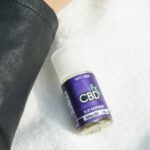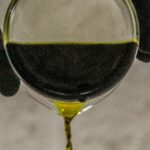Best Methods for Testing New Vape Flavors
As the vaping industry continues to expand, the demand for innovative and unique vape flavors has never been higher. For producers and enthusiasts alike, testing new vape flavors is not just an art, but a science. Discovering the best methods for flavor testing is essential to ensure that products meet consumer expectations while also complying with industry standards. In this article, we will explore effective strategies for assessing the quality and originality of new vape flavors, providing insights that both manufacturers and consumers can benefit from.
Understanding Flavor Profiles
Before diving into testing methods, it’s crucial to understand flavor profiles. Each vape flavor has a unique combination of ingredients that contribute to its overall taste experience. Recognizing how different components interact can provide valuable information during the testing process. A well-balanced flavor often results from the perfect blend of sweet, savory, and sour notes.
Choosing a Diverse Testing Panel
One of the most effective ways to test new vape flavors is to assemble a diverse testing panel. This panel should include individuals with varying taste preferences and vaping experiences. By gathering feedback from different demographics—such as age, gender, and vaping habits—manufacturers can gain a well-rounded understanding of how their flavors are perceived.
When selecting testers, consider incorporating a mix of:
– Experienced vapers who can identify subtle flavor nuances.
– New vapers who may primarily judge flavors based on initial impressions.
– Flavor connoisseurs with experience in culinary tasting or mixology.
Using this variety in your testing panel will help ensure that the new flavors appeal to a broad audience.
The Importance of Blending and Steeping
Blending and steeping are critical steps in the flavor testing process. After combining the initial flavor ingredients, letting the mixture steep allows the flavors to marry and develop complexity. Typically, steeping times can vary from days to weeks, depending on the flavors used.
Recommended Steeping Times by Flavor Type:
| Flavor Type | Suggested Steeping Time |
|——————|————————-|
| Fruity Flavors | 3-7 days |
| Creamy Flavors | 1-2 weeks |
| Spicy Flavors | 2-4 weeks |
| Minty Flavors | 1-3 days |
For testing, it’s essential to document flavors’ evolution over time. Noting how the taste changes during steeping can provide insights into the optimal consumption window and enhance the overall vaping experience.
Conducting Blind Taste Tests
To eliminate bias and ensure an unbiased assessment of the flavors, blind taste tests are highly recommended. In these tests, participants try flavors without knowing their identities, focusing solely on taste. This method can reveal genuine preferences and highlight any potential issues that might otherwise go unnoticed if testers had prior knowledge of the flavors.
Procedure for Blind Taste Tests:
1. Prepare samples of each new flavor in identical bottles.
2. Label them with random numbers rather than flavor names.
3. Have testers evaluate each sample on criteria such as taste intensity, aftertaste, smoothness, and overall satisfaction.
4. Collect feedback and analyze the data for patterns and preferences.
Utilizing Feedback for Improvement
Once the taste tests are complete, compiling and analyzing the feedback is essential. Look for trends in the data—do most testers love the flavor, or are there consistent critiques? Using qualitative and quantitative feedback can guide further refinement of the recipe.
Adjustments may include:
– Modifying the strengths of specific flavor notes.
– Balancing sweetness or introducing new ingredients.
– Creating variations based on tester preferences, resulting in multiple iterations of the same flavor.
By remaining open to feedback and willing to adapt, manufacturers can ensure their new vape flavors resonate with their target audience.
Incorporating Technology for Flavor Analysis
Recent advances in technology allow for flavor analysis that goes beyond human perception. Instruments like gas chromatography can break down vape flavors at a molecular level, providing objective data about the ingredients. While this may not replace human testing, it can supplement the process by identifying potential improvements and ensuring quality control.
Benefits of Flavor Analysis Technology:
– Objective measurement of flavor compounds

– Identification of undesirable ingredients
– Enhanced consistency in production
Incorporating technology into the flavor testing process can significantly improve the end product and streamline production efforts.
Conclusion
Through a combination of diverse testing panels, steeping techniques, blind taste tests, and advanced technology, manufacturers can effectively test new vape flavors to meet consumer demands and enhance the quality of their offerings. By using these best methods, the industry can continue to innovate, providing vapers with exceptional taste experiences.
“`




